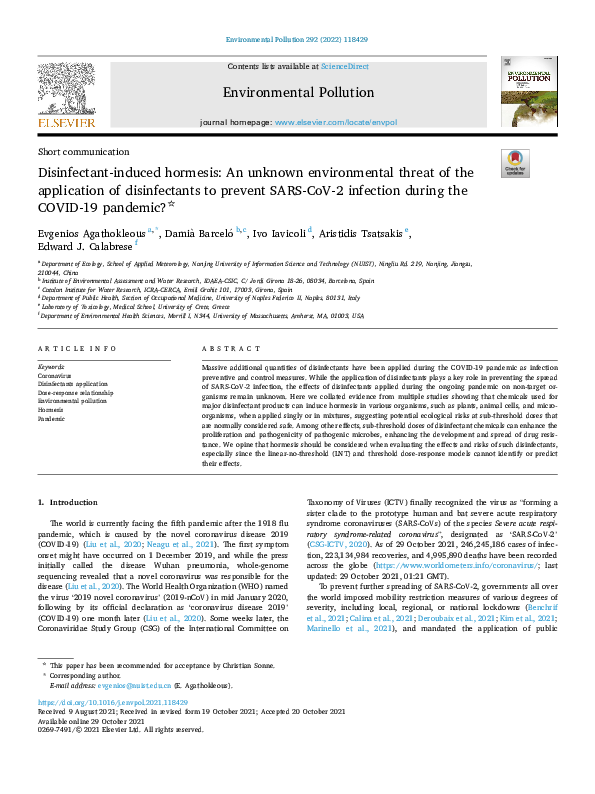Disinfectant-induced hormesis: an unknown environmental threat of the application of disinfectants to prevent SARS-CoV-2 infection during the COVID-19 pandemic?

Agathokleous, Evgenios ; Barceló, Damià ; Iavicoli, Ivo ; Tsatsakis, Aristidis ; Calabrese, Edward J.
2022
292
Part B
118429
epidemic disease ; disinfectants ; dose response relationship ; environmental impact assessment
Chemicals
https://doi.org/10.1016/j.envpol.2021.118429
English
Bibliogr.
"Massive additional quantities of disinfectants have been applied during the COVID-19 pandemic as infection preventive and control measures. While the application of disinfectants plays a key role in preventing the spread of SARS-CoV-2 infection, the effects of disinfectants applied during the ongoing pandemic on non-target organisms remain unknown. Here we collated evidence from multiple studies showing that chemicals used for major disinfectant products can induce hormesis in various organisms, such as plants, animal cells, and microorganisms, when applied singly or in mixtures, suggesting potential ecological risks at sub-threshold doses that are normally considered safe. Among other effects, sub-threshold doses of disinfectant chemicals can enhance the proliferation and pathogenicity of pathogenic microbes, enhancing the development and spread of drug resistance. We opine that hormesis should be considered when evaluating the effects and risks of such disinfectants, especially since the linear-no-threshold (LNT) and threshold dose-response models cannot identify or predict their effects."
Digital
The ETUI is co-funded by the European Union. Views and opinions expressed are however those of the author(s) only and do not necessarily reflect those of the European Union or the ETUI.